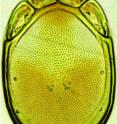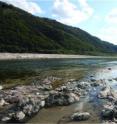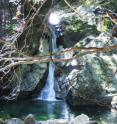Tiny water creepy crawlies from South Korea and the Russian Far East
Related images
(click to enlarge)
Water mites of the family Torrenticolidae are tiny, heavily sclerotized and crawling water creatures presently known from all continents except Antarctica. More than 400 species are described so far but this is expected to be only a minor pars of their diversity, especially in the tropical areas where the family is most species abundant. Until recently only one species was known from South Korea, and five from the Russian Far East. A recent study, published in the open access journal Zookeys, adds up to the diversity in this regions with 2 new to science species and 5 described from South Korea for the first time. The two new species Torrenticola kimichungi and Monatractides abei, have been described from South Korea and the Russian Far East as a part of the project aimed at uncovering Korean invertebrate diversity, and led by the National Institute of Biological Resources (NIBR). The species have been named to commemorate the contributions of two scientist Drs Il-Hoi Kim and Kyung-Sook Chung and Dr Hiroshi Abe for their extensive studies in the area of water mites.
"Water mites are a diverse and widespread but still neglected group of freshwater fauna. In natural streams, species diversity of water mites is generally rather high and may reach, or occasionally even exceed, 50 species at single collecting site, often most of these are torrenticolid mites. Torrenticolid mites avoid habitats with silty substrata and intermittent flow, and their study can give valuable information on the ecological characteristics of the areas with an unstable surface water regime," says the lead author Vladimir Pešić, Department of Biology, University of Montenegro.
Source: Pensoft Publishers
Other sources
- Tiny water creepy crawlies from South Korea and the Russian Far Eastfrom Science DailyWed, 15 May 2013, 21:50:31 UTC
- Tiny water creepy crawlies from South Korea and the Russian Far Eastfrom PhysorgWed, 15 May 2013, 15:54:03 UTC


